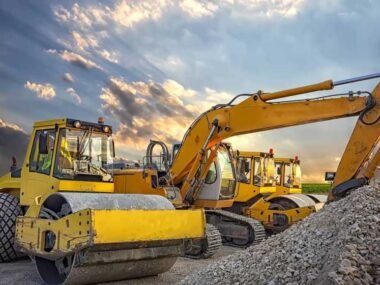Introduction
Plumbing may often go unnoticed until a problem arises, but it is the backbone of modern living, ensuring seamless water flow for our daily needs. For a homeowner, understanding the intricacies of plumbing isn’t just about immediate repairs; it’s about preserving the comfort and functionality of one’s home. Plumbing services can provide invaluable support, but knowing when and why to reach out is essential in saving time and money in the long run.
Learning basic plumbing skills empowers homeowners to tackle minor issues efficiently and helps them communicate effectively with professionals when complex problems occur. This article delves deeper into essential plumbing tips and tricks to demystify common challenges, offering a blend of prevention and action that every conscientious homeowner should know.
Understanding Plumbing Basics
Plumbing may often go unnoticed until a problem arises, but it is the backbone of modern living, ensuring seamless water flow for our daily needs. For a homeowner, understanding the intricacies of plumbing isn’t just about immediate repairs; it’s about preserving the comfort and functionality of one’s home. Plumbing services can provide invaluable support, but knowing when and why to reach out is essential in saving time and money in the long run. Learning basic plumbing skills empowers homeowners to tackle minor issues efficiently and helps them communicate effectively with professionals when complex problems occur. According to HowStuffWorks, having a solid grasp of your home’s plumbing system—including how water is distributed, where shut-off valves are located, and how drainage works—can make a significant difference in handling emergencies and routine maintenance. This article delves deeper into essential plumbing tips and tricks to demystify common challenges, offering a blend of prevention and action that every conscientious homeowner should know.
Common Plumbing Issues and Solutions
Plumbing issues like dripping faucets, clogged drains, and running toilets are not only common—their nuisances can be costly if ignored. These problems often stem from worn-out washers, faulty fixtures, or a buildup of waste material like hair and grease.In more rural homes, issues can also arise when you need your septic system pumped, which, if neglected, may lead to unpleasant backups and expensive repairs. As noted in a U.S. News & World Report article, recognizing the warning signs early can help homeowners avoid significant damage and costly repairs. A continuously dripping tap, for example, can waste thousands of gallons of water each year, while a clogged drain may be resolved with basic tools and solutions found at a local hardware store.
Essential Plumbing Tools for Every Homeowner
For any homeowner, maintaining a basic toolkit tailored to plumbing is as essential as having a first-aid kit. A plunger is indispensable for combating minor clogs, while a high-quality pipe wrench provides leverage for loosening stubborn connections. A drain snake is valuable for navigating the ins and outs of pipes to remove tougher blockages, and a basin wrench is specific to under-tight spaces. These tools empower homeowners to address immediate issues and build confidence in performing routine checks and maintenance, ultimately extending the lifespan of their plumbing system.
DIY Plumbing: When to Fix and When to Call a Professional
Do-it-yourself plumbing can be gratifying, offering a clear sense of accomplishment after resolving an issue with your hands. However, knowing your limits is crucial. Simple repairs like tightening fittings or using a plunger do not require expert skills, but they can make a substantial difference in avoiding water wastage. When you encounter complex challenges such as extensive pipe corrosion or septic tank issues, it’s wise to engage professional plumbing services to prevent aggravating the problem. Recognizing the balance between DIY enthusiasm and professional necessity is key to successful home plumbing management.
Preventative Measures to Maintain Your Plumbing System
Ensuring the longevity of your plumbing system involves regular maintenance and a few simple habits. Avoid pouring fats or oils down the kitchen sink, as these can solidify and block pipes. Install drain screens to catch debris and hair before they cause blockages. Regularly inspect your plumbing for leaks or damage, especially those less visible parts.
The Environmental Impact of Plumbing and Its Future
While plumbing systems are essential for everyday life, they have significant environmental implications. Improper waste management and excessive water usage strain natural resources. However, plumbing technology advancements continue moving the needle toward more sustainable solutions. Bright fixtures and water-saving devices are not just trends but critical shifts towards reducing our environmental footprint. Embracing these technologies facilitates response: improper use while setting the path for the future of eco-friendly home systems, ensuring that we coexist harmoniously with the environment.
Key Plumbing Trends in Modern Homes
The integration of smart home technology into plumbing systems has revolutionized household management. From water leak detectors that notify homeowners of potential issues on their smartphones to touchless faucets and dual-flush toilets reducing water usage, these innovations improve efficiency across the board. Adopting these trends offers convenience and savings and aligns with a growing environmental consciousness, appealing to a new generation of homeowners who value technology and sustainability.
Resources and Further Reading
Numerous online resources and publications offer valuable insights and guides for those interested in learning more about plumbing or tackling specific issues. Whether looking for detailed blueprints or simple maintenance tips, these resources equip you with the knowledge to keep your plumbing in excellent shape and confidently handle any unexpected challenges.










